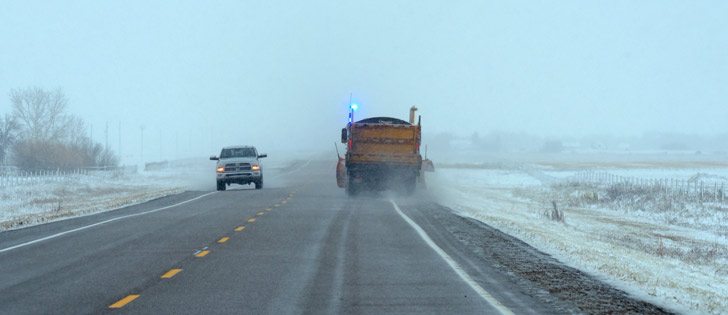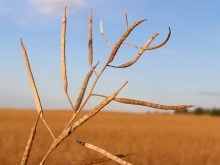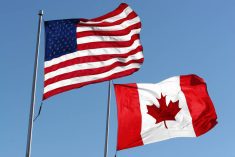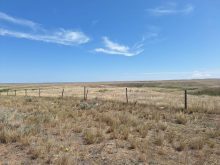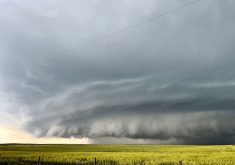Saskatchewan farmers with unharvested crops and bins full of tough grain will be watching the forecast closely this week, hoping the weatherman deals up some above-average weather.
But what does above-average weather look like in late October and early November? And if it does happen, how much will it help producers?
Virginia Wittrock, a climate research specialist with the Saskatchewan Research Council in Saskatoon, described November as a typical shoulder season.
Average daily temperatures can be expected to decline gradually over the course of the month, but extreme outliers — meaning well-above and well-below average temperatures — are common.
Read Also

Feds propose overhaul of chronic wasting disease control program
Chronic Wasting disease control program getting updated by Canadian Food Inspection Agency with feedback encouraged from producers.
“It’s one of those stereotypical shoulder months,” Wittrock said.
“It’s one of those ones where temperatures swing, where it can be really, really warm or really, really cold.”
Wittrock manages data collected at an SRC weather station in Saskatoon.
Station data collected since 1963 suggests that average daytime high temperatures at the start of November are typically around 3 C in central Saskatchewan while average daytime lows are typically around -5 C.
However, average daytime highs drop to around -4 C by the end of the month and average daytime lows fall to -12.5 C.
Precipitation levels can be variable. It occurs eight or nine days out of 30 in a typical November in Saskatoon with average monthly accumulations around 16 millimetres, Wittrock said.
Growers who are hoping for a repeat of November 2009 are likely to be disappointed, she added.
In 2009, a significant proportion of Saskatchewan’s grain and oilseed crop was still in the field as of Oct. 31, but mild dry, weather throughout the month allowed many growers to finish combining before the onset of winter.
According to SRC data, November of 2009 was far from typical.
In fact, it was the driest November ever recorded in Saskatoon, at least since SRC began collecting data 52 years ago.
Total monthly precipitation that year was .4 mm, or roughly 2.5 percent of normal.
Wittrock said weather conditions observed so far this year are similar to those observed in 2010, at least in terms of seasonal precipitation.
Both 2010 and 2016 started out relatively dry, but precipitation increased during the growing season and continued throughout the harvest period.
In November 2010, the highest temperature recorded was 16.1 C Nov. 5, while the lowest temperature recorded was -26.4 C Nov. 25.
Precipitation was recorded on 13 days in November 2010 with total monthly accumulations of 28.2 mm.


